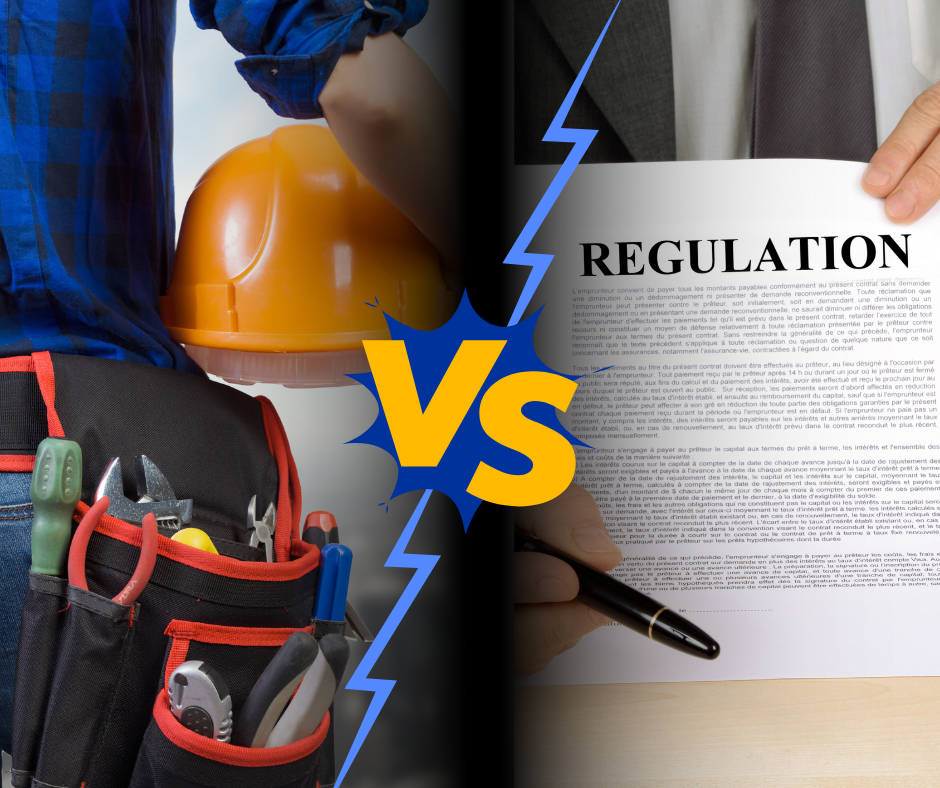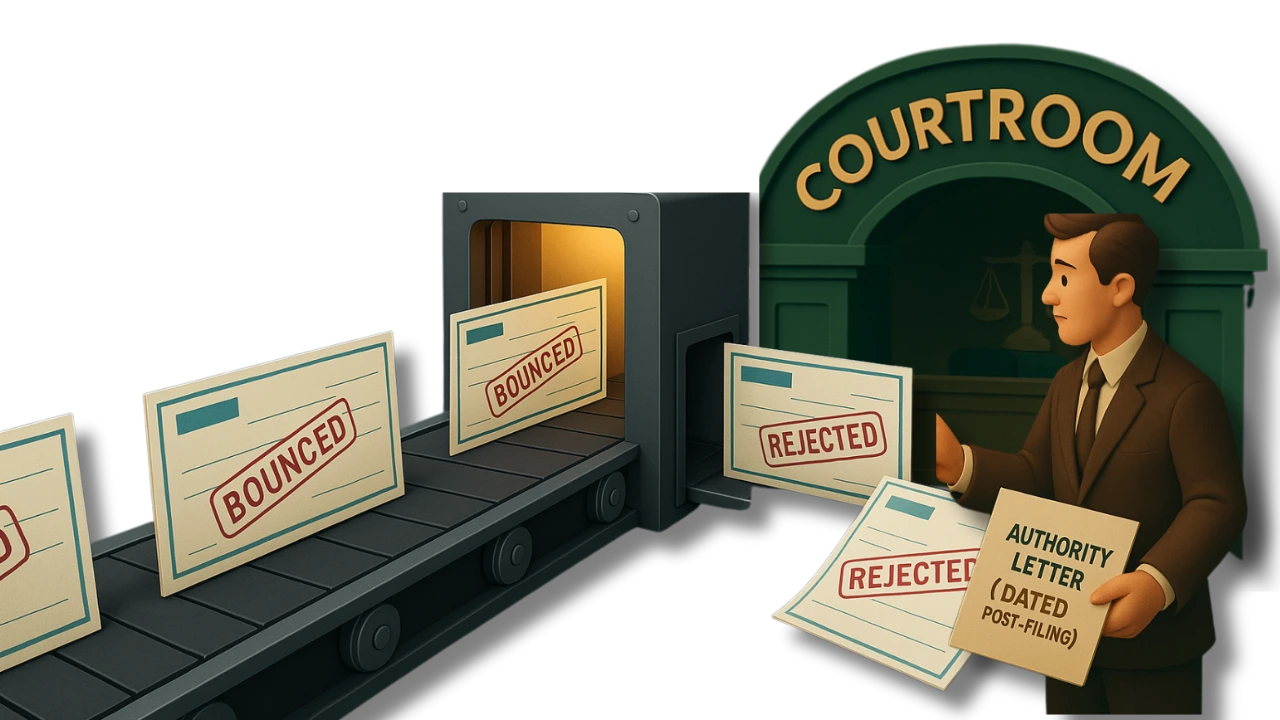Discover how India’s construction industry can overcome legal hurdles like environmental clearances, land acquisition laws, and labor regulations. Learn proactive compliance strategies to mitigate delays, penalties, and legal disputes for smoother project execution.
Introduction
India’s construction industry operating within a highly complex legal and regulatory framework contributes approximately 9% to the nation’s GDP. This framework—comprising environmental statutes, land acquisition laws, and labor regulations necessitates that they must navigate the regulatory landscape with precision, as the line between compliance and chaos is often a perilously thin one crossing which leads to project delays, litigation, and financial liabilities.
As the demand for rapid infrastructure development grows, construction companies face numerous challenges that require careful planning. This article examines the primary regulatory hurdles, including environmental clearances, land acquisition laws, and labor regulations, and offers strategies for mitigating risks through proactive compliance.
Environmental Clearances and Delays
Securing environmental clearances is a substantial challenge, as projects must comply with various environmental laws, including the Environment (Protection) Act, 1986, and the Environmental Impact Assessment (EIA) Notification, 2006. The EIA process, overseen by the Ministry of Environment, Forest and Climate Change (MoEFCC), imposes stringent due diligence requirements, particularly for large-scale infrastructure projects.
The involvement of the National Green Tribunal (NGT), established under the NGT Act, 2010, adds further complexity. The NGT has broad authority to halt projects that do not adhere to environmental norms, as seen in the landmark case of Ms. Betty C. Alvares vs. the State of Goa and Ors. where construction activities in Goa were suspended due to non adhere with the Coastal Regulation Zone Notification. This ruling highlights the importance of complying with the Coastal Regulation Zone Notification. Failure to secure timely clearances can result in not only delays but also legal injunctions, fines, and, in severe cases, project cancellations.
Moreover, urban projects must comply with the Construction and Demolition Waste Management Rules, 2016, which regulate the disposal of construction waste to mitigate pollution. Non-compliance with these regulations can lead to penalties, including heavy fines or forced project stoppages.
Land Acquisition and Zoning Law
Land acquisition remains a contentious issue in India’s construction industry, governed by the Right to Fair Compensation and Transparency in Land Acquisition, Rehabilitation and Resettlement Act, 2013 (LARR). While the Act ensures equitable compensation and resettlement for landowners and displaced communities, it also introduces legal challenges that frequently delay infrastructure projects.
Zoning laws add another layer of complexity, with Coastal Regulation Zone (CRZ) rules imposing additional restrictions in coastal and ecologically sensitive areas. The challenges are compounded by state-specific regulations. For example, the Floor Space Index (FSI), which regulates the permissible density of construction, varies significantly across regions, impacting project viability and timelines.
Construction firms must not only comply with local land-use regulations but also anticipate potential delays stemming from public objections or legal disputes under Article 14 and Article 21 of the Constitution of India. Failure to adhere to these laws may result in public interest litigations (PILs) or lawsuits that can severely impact project timelines.
Labour Law Compliance and Worker Safety
A critical aspect of the regulatory framework that governs the construction industry is the Building and Other Construction Workers (Regulation of Employment and Conditions of Service) Act, 1996, it mandates the registration of construction firms with state welfare boards, provision of safety equipment, and other welfare measures to protect workers’ rights.
Non-compliance with these requirements can lead to severe penalties, including fines and potential project shutdowns. In particular, failure to meet safety standards on large, hazardous projects can expose companies to litigation, under both civil and criminal liability frameworks.
Additionally, construction companies are expected to adhere to worker welfare schemes, such as insurance and health benefits, which add to the administrative burden. Given the dangerous nature of construction work, compliance with safety regulations is not only a legal obligation but also a reputational imperative. Companies that fail to protect their workforce risk legal liabilities and reputational damage.
NGT Rulings and Increasing Litigation
The role of the National Green Tribunal (NGT) in overseeing environmental compliance has expanded significantly, leading to a notable uprising in litigation against infrastructure projects. The tribunal has been active in cities like Delhi NCR, where air and water pollution are major concerns.
NGT rulings often invoke the Air (Prevention and Control of Pollution) Act, 1981 and the Water (Prevention and Control of Pollution) Act, 1974, placing strict limits on emissions and effluent discharge. Projects that fail to implement adequate measures face legal action, including stay orders and revocation of clearances. Recent SC ruling in Goa Foundation V. The Goa State Environment Impact Assessment Authority & Ors(non-reportable) on July 23rd, 2024, set aside NGT Order which allowed Construction of Tiracol Bridge In Goa’s Querim Beach, serves as a reminder that compliance with environmental regulations is critical to mitigating litigation risks and ensuring the continuity of projects.
Strategies for Navigating Regulatory Challenges
To effectively navigate India’s complex regulatory framework, construction companies must adopt a proactive compliance strategy. Early engagement with environmental authorities and thorough Environmental Impact Assessments (EIAs) are crucial to obtaining timely clearances, particularly under the Environment (Protection) Act, 1986.
Compliance with land acquisition laws, such as the Right to Fair Compensation Act (LARR, 2013), requires rigorous due diligence on land titles and transparent processes to avoid disputes. Labour law compliance, particularly under the Building and Other Construction Workers Act, 1996, demands adherence to safety protocols and welfare schemes to mitigate legal risks.
Leveraging technology such as Building Information Modeling (BIM) and pollution monitoring systems helps ensure real-time compliance with zoning, air, and water regulations, reducing potential litigation. Legal experts also recommend adopting alternative dispute resolution mechanisms to manage litigation risks efficiently, and embracing sustainable construction practices, like green building certifications, to streamline environmental approvals and enhance legal defensibility. By integrating these strategies, construction firms can effectively mitigate delays, penalties, and legal disputes, ensuring smoother project execution.
Conclusion
To effectively navigate India’s complex regulatory framework, construction companies must adopt a proactive compliance strategy. Early engagement with environmental authorities and thorough Environmental Impact Assessments (EIAs) are crucial to obtaining timely clearances, particularly under the Environment (Protection) Act, 1986. Compliance with land acquisition laws, such as the Right to Fair Compensation Act (LARR, 2013), requires rigorous due diligence on land titles and transparent processes to avoid disputes. Labor law compliance, particularly under the Building and Other Construction Workers Act, 1996, demands adherence to safety protocols and welfare schemes to mitigate legal risks. Leveraging technology such as Building Information Modeling (BIM) and pollution monitoring systems helps ensure real-time compliance with zoning, air, and water regulations, reducing potential litigation. Legal experts also recommend adopting alternative dispute resolution mechanisms to manage litigation risks efficiently, and embracing sustainable construction practices, like green building certifications, to streamline environmental approvals and enhance legal defensibility. Ultimately, companies that integrate these strategies can mitigate delays, penalties, and legal disputes—proving that proactive compliance is the only path to avoid operational chaos in this highly regulated industry.
CONTRIBUTORS
Aashish Arya (Associate)
Anubhav Singhal (Associate)
Divyanshu Dubey (Intern)






